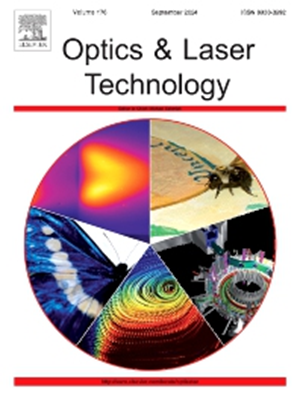Engineering of self-bending surface plasmon polaritons through Hermite–Gaussian mode expansion
IF 4.6
2区 物理与天体物理
Q1 OPTICS
引用次数: 0
Abstract
Surface plasmon polaritons have received much attention over the last decades in photonics or nanotechnology due to their inherent high sensitivity to metal surface variations (e.g., presence of adsorbates or changes in the roughness). It is thus expected that they will find promising major applications in widely cross-disciplinary areas, from material science to medicine. Here we introduce a novel theoretical framework suitable for designing new types of structured paraxial surface plasmon beams and controlling their propagation. More specifically, this method relies on a convenient Hermite-Gaussian mode expansion, which constitutes a complete basis set upon which new types of structured paraxial plasmon beams can be generated. The family of beams generated in this way presents a rather peculiar feature: they exhibit local intensity maxima at different propagation distances, which enables the control over where to place the beam energy. This, thus, opens up worthwhile pathways to manipulate light propagation along metal surfaces at the nanoscale. As a proof-of-concept, we provide numerical evidence of the feasibility of the method by analyzing the propagation of Airy-based surface plasmon polaritons along an air-silver interface.
利用厄米-高斯模式展开的自弯曲表面等离子体激元工程
由于表面等离子激元对金属表面变化(例如,吸附剂的存在或粗糙度的变化)具有固有的高灵敏度,在过去的几十年中,表面等离子激元在光子学或纳米技术中受到了广泛关注。因此,预计它们将在从材料科学到医学的广泛跨学科领域找到有希望的主要应用。本文介绍了一种新的理论框架,适用于设计新型结构的近轴表面等离子体光束并控制其传播。更具体地说,这种方法依赖于一个方便的厄米-高斯模式展开,它构成了一个完整的基础集,在此基础上可以产生新型的结构傍轴等离子体光束。以这种方式产生的光束族呈现出一个相当独特的特征:它们在不同的传播距离上表现出局部强度最大值,这使得可以控制光束能量的位置。因此,这为在纳米尺度上操纵光沿着金属表面传播开辟了一条有价值的途径。作为概念验证,我们通过分析空气基表面等离子激元沿空气-银界面的传播,为该方法的可行性提供了数值证据。
本文章由计算机程序翻译,如有差异,请以英文原文为准。
求助全文
约1分钟内获得全文
求助全文
来源期刊
CiteScore
8.50
自引率
10.00%
发文量
1060
审稿时长
3.4 months
期刊介绍:
Optics & Laser Technology aims to provide a vehicle for the publication of a broad range of high quality research and review papers in those fields of scientific and engineering research appertaining to the development and application of the technology of optics and lasers. Papers describing original work in these areas are submitted to rigorous refereeing prior to acceptance for publication.
The scope of Optics & Laser Technology encompasses, but is not restricted to, the following areas:
•development in all types of lasers
•developments in optoelectronic devices and photonics
•developments in new photonics and optical concepts
•developments in conventional optics, optical instruments and components
•techniques of optical metrology, including interferometry and optical fibre sensors
•LIDAR and other non-contact optical measurement techniques, including optical methods in heat and fluid flow
•applications of lasers to materials processing, optical NDT display (including holography) and optical communication
•research and development in the field of laser safety including studies of hazards resulting from the applications of lasers (laser safety, hazards of laser fume)
•developments in optical computing and optical information processing
•developments in new optical materials
•developments in new optical characterization methods and techniques
•developments in quantum optics
•developments in light assisted micro and nanofabrication methods and techniques
•developments in nanophotonics and biophotonics
•developments in imaging processing and systems

 求助内容:
求助内容: 应助结果提醒方式:
应助结果提醒方式:


